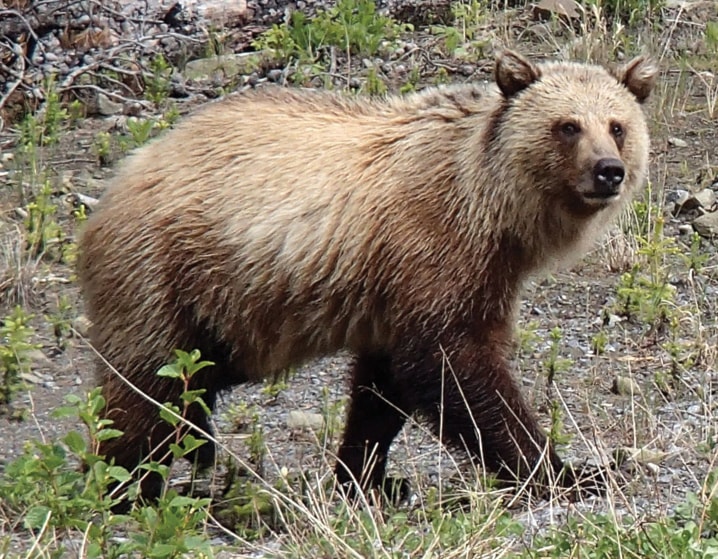A grizzly bear shot while north of Nordegg was one of three Alberta research bears illegally killed between June and September.
Gordon Stenhouse, program lead with Foothills Research Institute’s grizzly bear program, said the bear, known as G150, was one of six collared bears in the Nordegg area for a study that started in June in conjunction with forestry company Weyerhaeuser.
“It was killed illegally and . . . near a roadway. It was shot and left. And it’s part of an ongoing investigation by provincial authorities,” Stenhouse said on Wednesday.
Twenty-nine bears have died so far this year. Last year, 14 died from human causes. Investigations are still underway to determine how many deaths this year were caused by people.
Stenhouse said the institute has been capturing bears for 15 years and having three illegally killed makes this the worst year yet.
The Nordegg bear, killed in September, was less than five years old and it would have been unusual for it to die from natural causes, he said.
The bears being studied have GPS collars to track their movements by satellite. Collars give a location every hour and that information gets transmitted to researchers every 10 hours.
If the bears don’t move for eight hours, a field team goes to investigate if the bear has managed to remove the collar or if it’s dead.
Stenhouse said three deaths were discovered as a result of the collars and there’s always the question of how many bears are dying in Alberta that authorities don’t know about.
Grizzly bears are an endangered species in Alberta. In 2008, the province created the Grizzly Bear Recovery Plan, which a steering committee is currently updating.
Stenhouse, who is working with the committee, said human-caused mortality was recognized as an issue in the initial plan.
“Human-caused mortality is still a huge concern. Obviously if we want this species to survive in our province, we’ll need to try to fix this problem.”
The study in the Nordegg area, north of Hwy 11, is underway to examine the movement patterns of bears compared to data collected in the area between 1999 and 2003.
He said they know how the landscape has changed due to work in oil and gas and forestry industries, but they don’t know what has happened to the local bear population.
“The goal is sustainable resource development. We want to ensure the species that depend on that habitat can also survive. It really is a way to check on how those animals are doing. We want to see what’s changed.”
Collars are supposed to last at least two full seasons.
Stenhouse said the Nordegg region is a low-density area for bears so it takes a long time to catch and collar a bear. They are either shot from helicopters with tranquilizer darts to immobilize them or lured into culvert traps with food.
“Bears are wary most of the time. Lots of bears will come look in the culvert, look in the trap and not go inside. So it takes a while.”
“Next year, we’d like to have 10 collared bears in the area.”
szielinski@www.reddeeradvocate.com
